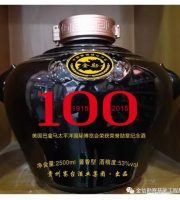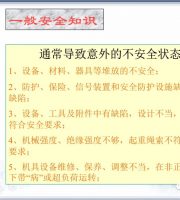Epoxy self leveling construction technology 1
.
Base surface treatment 1
.
First remove the laitance, dust and garbage on the concrete surface
.
2
.
Remove the laitance with a grinder to form a rough surface
.
If there is grease in the local area, clean it with detergent
.
When there is water, clean and dry
.
3
.
Expansion joint treatment: open joint treatment: clean the gap garbage – fill the silica gel strip – fill the cutting joint with elastic glue – clean around the gap
.
Expansion joint filling: clean up the gap garbage – fill with epoxy mortar – paste a layer of fiber cloth along the gap
.
Crack treatment: use epoxy primer and intermediate coating to seal small cracks
.
Treatment method of ground cracks and hollows caused by irregular settlement: use cutting machine to cut V-shaped groove at cracks, remove sundries, and then inject mortar
.
The cutting width is twice the cutting depth
.
2、 In the construction of epoxy floor primer, the main agent and curing agent shall be mixed according to the proportion, fully stirred evenly, and rolled with roller within the service time
.
When rolling, it shall be thin and uniform
.
After finishing, it shall be glossy, and the places without glossy shall be timely re coated
.
The next process can be carried out in 12 hours
.
3、 In the batch repair construction of epoxy floor, the main agent of intermediate coating shall be fully stirred, and then the main agent and curing agent shall be mixed according to the proportion
.
After mixing, add appropriate amount of fine quartz sand, mix well, and scrape with a trowel to make the surface smooth
.
If the patching is uneven, or too smooth, and the interval time is long, it needs to be hardened and dried, then it needs to be fully sanded and cleaned with a vacuum cleaner
.
If the coating in the mixing drum is in the hardening state, it must be stopped and replaced at any time
.
The next step can be done in 24 hours
.
4、 In the construction of epoxy putty, firstly, the main agent of top coat shall be fully stirred, and then the main agent and curing agent shall be mixed in proportion to fully stir
.
After mixing, add appropriate amount of fine quartz powder, mix well, and scrape with a spatula to make the surface smooth
.
The next step can be done in 12 hours
.
5、 In the construction of self flowing plane paint, the main agent shall be fully stirred evenly, and then the curing agent shall be poured into the barrel containing the main agent to avoid uneven mixing of materials
.
Mix well, pour on the ground, and shape with a 2 mm trowel
.
After 72 hours of construction, you can step on people lightly
.
6、 The finished floor shall be marked according to the size, separated by masking paper, rolled with marking paint, and then the masking paper shall be torn off
.
People can get on after 12 hours of construction
.
Epoxy self leveling floor paint is one of the epoxy resins
.
It is widely used in construction, and it is an environmental friendly and pollution-free floor paint
.
It can ensure no peeling of the ground after construction and the smoothness and surface strength of the base, and can also fill the original cutting joints or cracks of the ground base, so as to ensure the surface effect of self leveling and crack prevention; At the same time, the product can also carry out high-pressure dust cleaning on the grass-roots to ensure that the ground is clean
.
1、 Construction scheme of epoxy self leveling floor 1
.
Inspection and treatment of construction process base course → application of epoxy sealing primer → laying a layer of glass fiber cloth → polishing and repair → troweling wear-resistant epoxy self leveling intermediate paint → troweling wear-resistant epoxy self leveling surface paint → waxing maintenance → completion acceptance 2
.
Construction method 2.1 inspection and treatment of base course 2.1.1ph value measurement for the dried base course surface, Moisten the area of about 10cm2 with local water, then paste a pH test paper with a measurement range of 5-14 on the surface of the wet base to make it wet, and compare it with the pH value template within 5S to read out the pH value
.
The pH value of the floor surface should be 6.8-8.0
.
If the alkalinity is too high, use 15% – 20% zinc sulfate or zinc chloride solution to wash the surface of the substrate
.
Finally, rinse it with clean water and dry it
.
2.1.2 moisture content measurement the moisture content of the surface of the substrate is measured with a moisture content meter
.
The water content should be less than 8% before painting
.
Otherwise, the water should be removed before the coating construction
.
In general, the following methods are adopted to discharge moisture 2.1.2.1 forced ventilation measures are adopted to strengthen air circulation, accelerate air flow, take away moisture and promote further evaporation of moisture in concrete base
.
2.1.2.2 heating can increase the temperature of concrete and surrounding air, accelerate the rate of moisture migration from concrete base to surface, and promote its rapid evaporation
.
2.1.3 crack repair: for cracks with width greater than or equal to 10 mm, epoxy mortar can be used for direct repair
.
For cracks with width less than 10 mm, “V” with opening width of 10 mm and depth of 10 mm can be chiseled along the cracks V-shaped groove, this “V” The concrete construction steps are as follows: 2.1.3.1 use the cutting machine to cut and shave the cracks along the cracks, so that the upper opening of the cracks is in “V” shape
.
The width of opening is about 10 mm and the depth is about 10 mm
.
And clean up all pieces and impurities
.
2.1.3.2 the V-shaped groove shall be leveled and reinforced with epoxy mortar
.
Waiting for “V” After the V-shaped groove is cleaned, the prepared epoxy mortar shall be injected into the groove
.
The epoxy mortar shall be tamped tightly, and the surface course shall be flush with the base surface on both sides
.
2.1.4 grinding and cleaning of concrete base: firstly, chisel away the bulging, loose and weak cement surface and concrete, expose the hard concrete base, and clean it
.
Then, the surface is roughened with a grinder to achieve a certain roughness, so as to improve the adhesion of the new coating and the service life of the coating floor
.
Finally, use the vacuum cleaner to remove the sand, dust and other impurities, and timely transport the garbage to the place designated by Party A
.
2.2 application of epoxy sealing primer before the application of epoxy mortar, a layer of epoxy sealing primer shall be applied to ensure the good adhesion between epoxy mortar and base surface
.
The application of epoxy sealing primer shall be carried out according to the following methods: 2.2.1 coating epoxy sealing primer is a two-component coating
.
According to the provisions of the coating product manual, component B (curing agent) shall be added to component a (main material) and fully stirred
.
The prepared coating should be used up within 4H to avoid material waste caused by coating curing
.
2.2.2 pour the prepared paint into the small paint bucket
.
Pay attention that the poured paint should not exceed 2 / 3 of the capacity of the small paint bucket
.
If it is too much, it is easy to cause the paint splashing
.
When brushing, don’t dip the brush too full, the part of the bristle immersed in the paint is 1 / 3 ~ 1 / 2 of the length of the bristle, and “dip less and frequently” should be achieved
.
Generally, the painting sequence should be from top to bottom, from left to right, from inside to outside, from slant to straight, from difficult to easy, so as to make the paint film uniform, dense and reach the design thickness
.
2.3 local low-lying areas shall be leveled
.
Pits and gaps shall be leveled with epoxy mortar
.
Each layer shall be no more than 30mm thick
.
The construction shall be carried out layer by layer until all defects such as pits and gaps are leveled to make the flatness ≤ 2mm / m
.
2.4 paving glass fiber cloth in order to prevent irregular cracks on the ground and enhance the integrity of the ground, a layer of glass fiber cloth is pasted before troweling wear-resistant epoxy self leveling paint
.
The construction method is as follows: first, brush a glue on the base surface which is 100 mm wider than the cloth width, and then, pave glass fiber cloth
.
When the cloth is paved, it can not be forced to pull to prevent warp and weft from being distorted, The fabric should also be spread out gradually
.
When brushing, it should be brushed from the middle to both sides to make the rubber fully infiltrate the cloth and drive out the bubbles
.
2.5 grinding repair after the glass fiber cloth is solidified, use sandpaper to polish it to remove the coarse grain, burr and other impurities
.
Finally, use a vacuum cleaner to remove the sand, dust and other impurities, and timely transport the garbage to the place designated by Party A.
.



